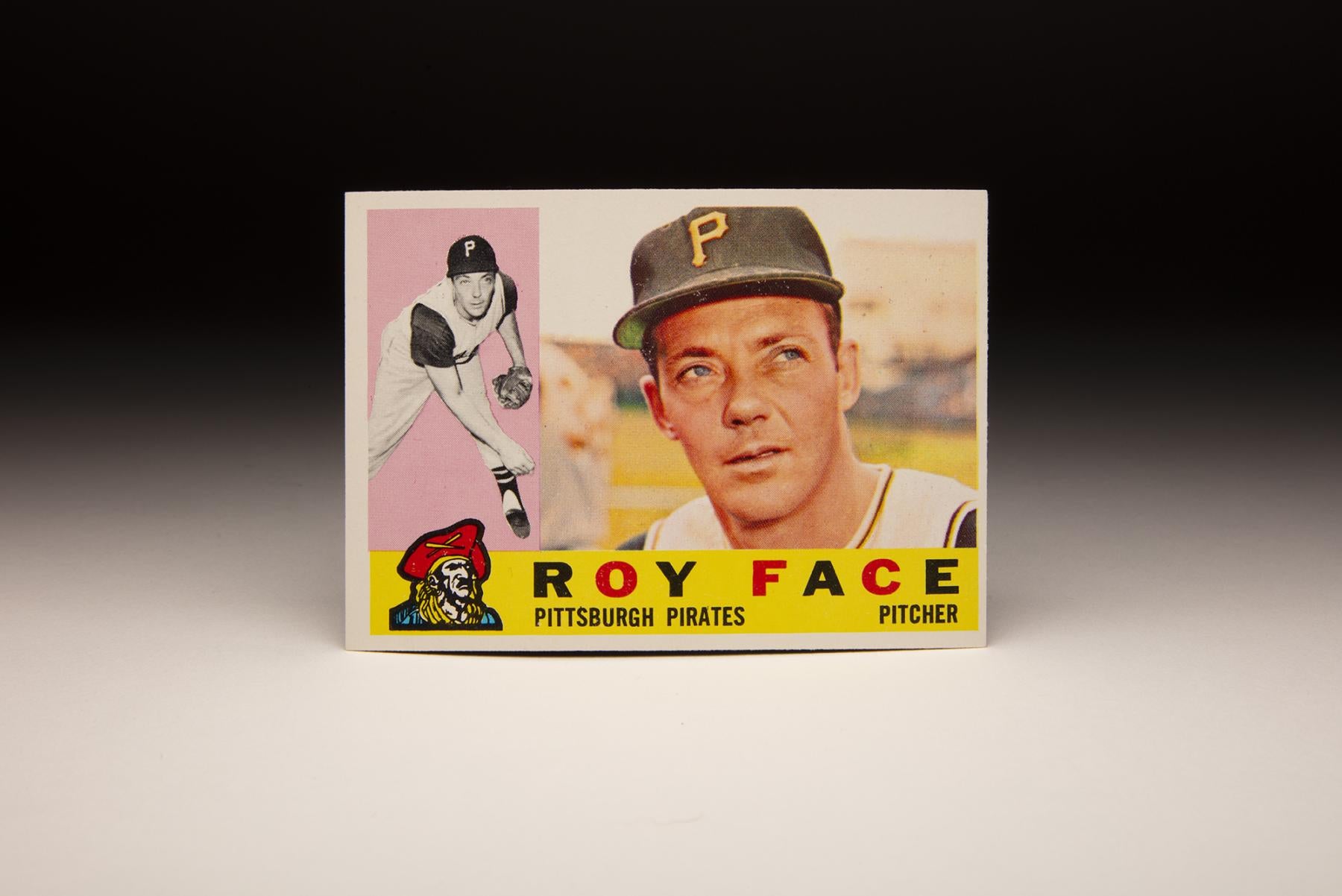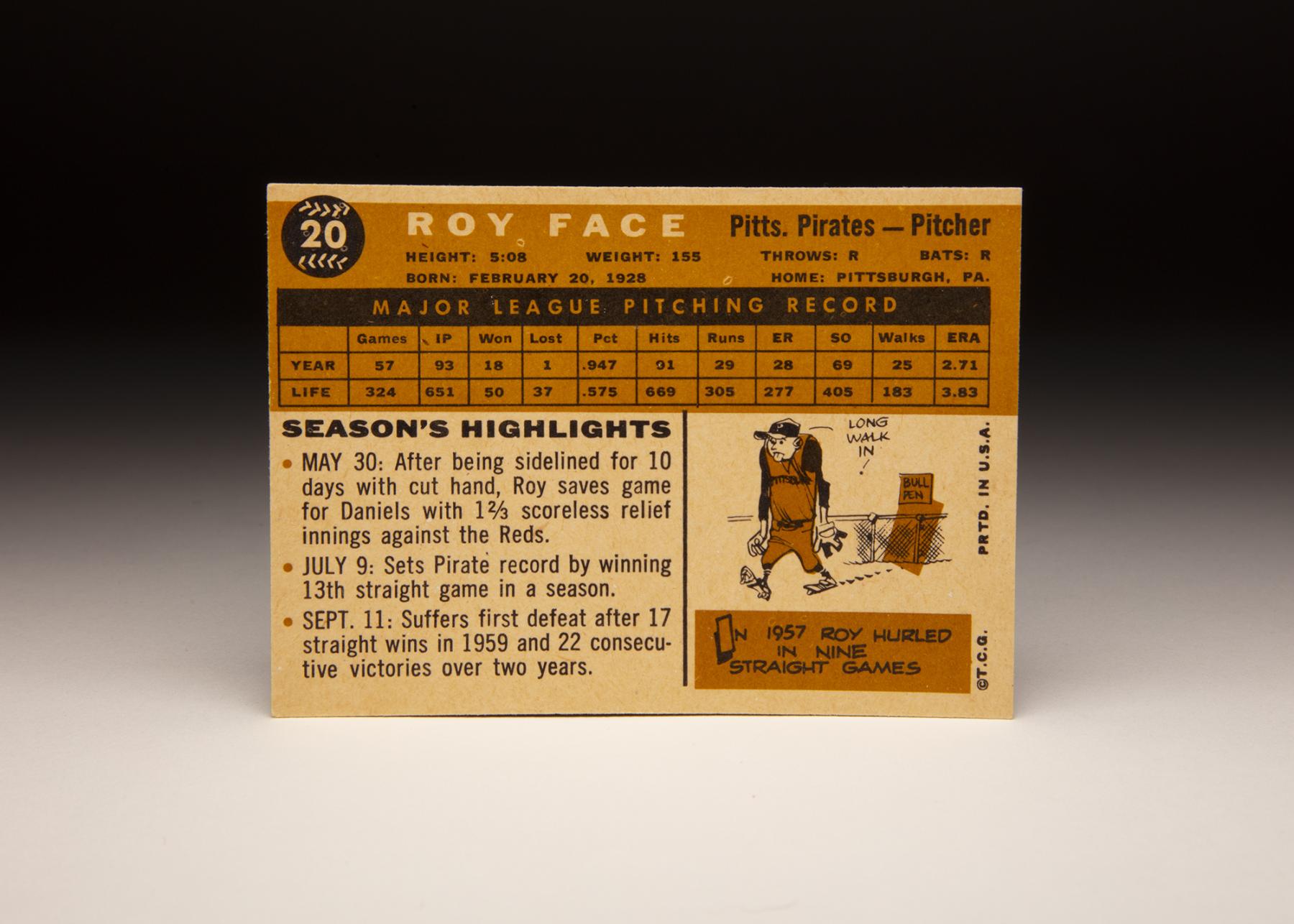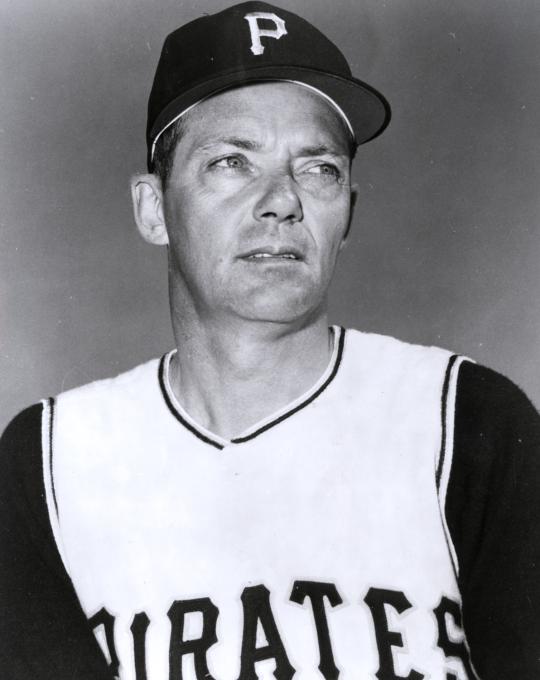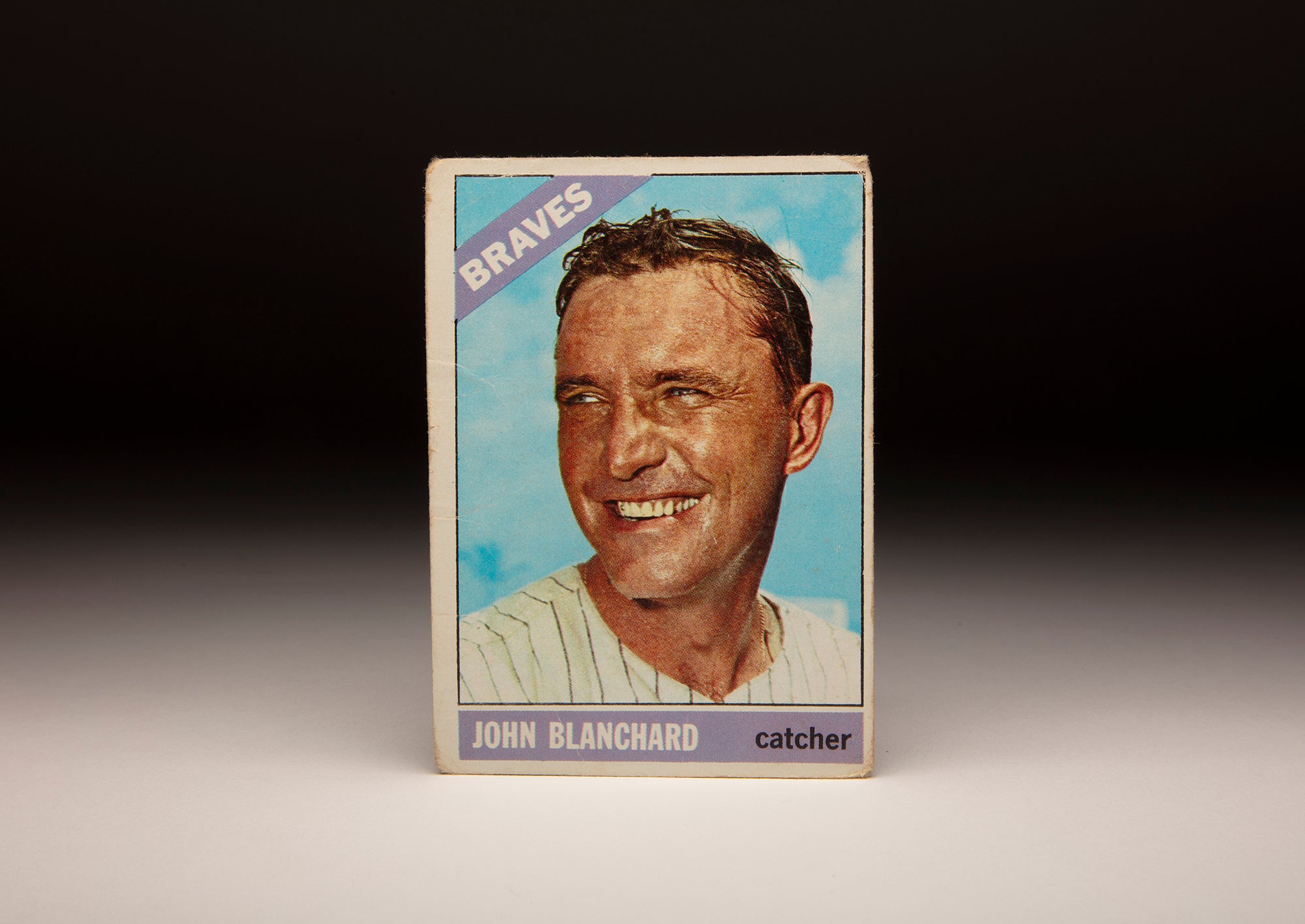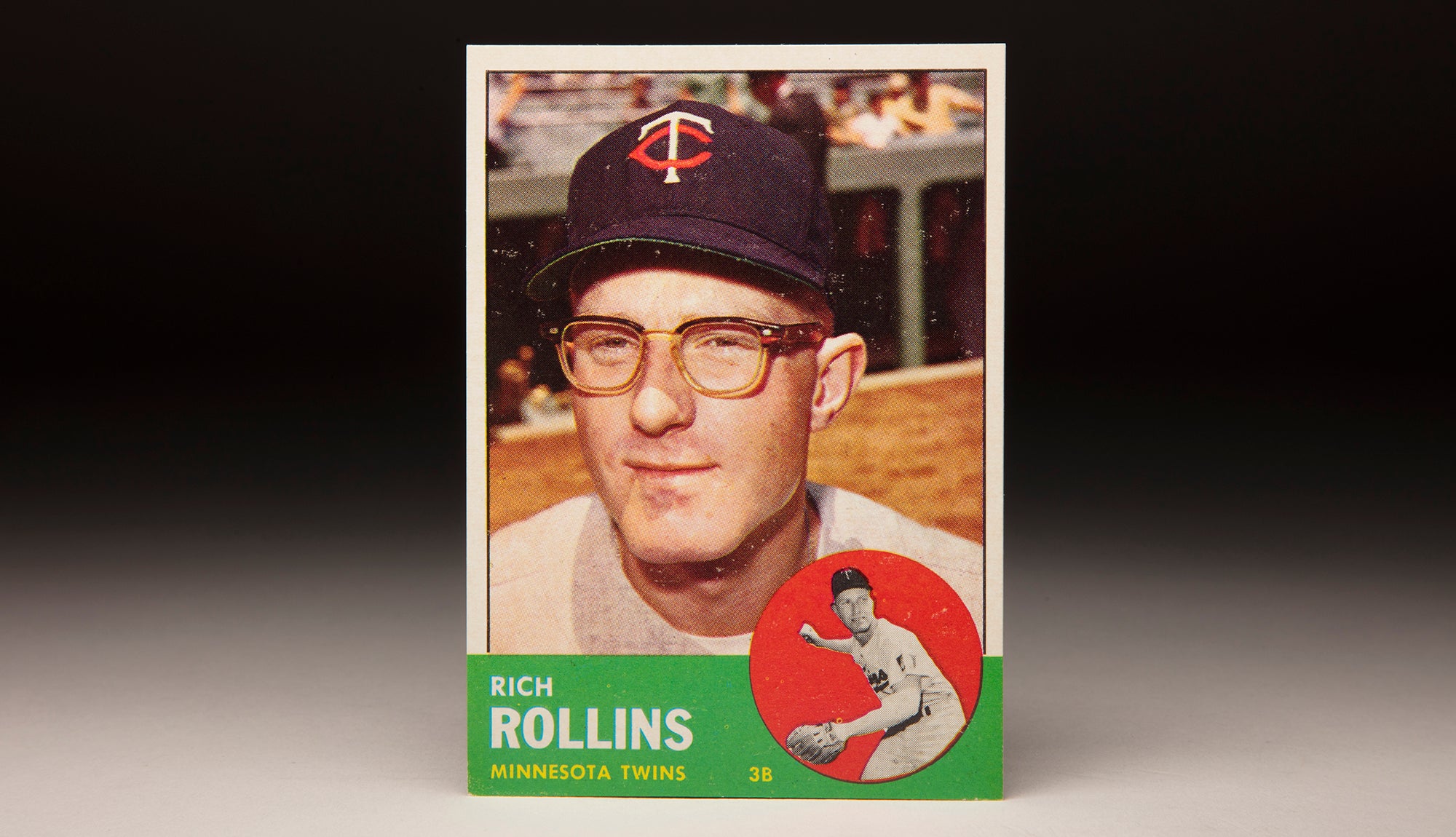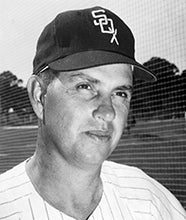- Home
- Our Stories
- #CardCorner: 1960 Topps Roy Face
#CardCorner: 1960 Topps Roy Face
At 5-foor-8 and – possibly – 155 pounds, Roy Face was never going to intimidate big league hitters.
But with one of baseball’s best forkballs – and the guts of a burglar – Face set the standard for relievers in the late 1950s and early 1960s.
Face’s 1960 Topps card was surely one of the most popular of the set, given his incredible 1959 season. In 57 games out of the Pittsburgh Pirates bullpen that year, Face went 18-1 – the most victories ever by a pitcher with one or fewer losses.
Official Hall of Fame Apparel
Proceeds from online store purchases help support our mission to preserve baseball history. Thank you!
Hall of Fame Membership
There is no simpler, and more essential, way to demonstrate your support than to sign on as a Museum Member.
Face won 22 straight games from June 7, 1958 through Sept. 10, 1959. On Sept. 11 – in the first game of a doubleheader against the Dodgers at the Los Angeles Memorial Coliseum – Face entered the game in the bottom of the eighth, relieving Bob Friend with the Pirates clinging to a 4-3 lead.
Face escaped the eighth, but the Dodgers needed only four plate appearances in the ninth – a single by Maury Wills, a sacrifice bunt by Ron Fairly, a triple by Jim Gilliam and a single by Charlie Neal – to record a 5-4 win and end Face’s streak.
“I feel badly because I couldn’t save the game for Bob Friend and also the fact we lost it,” Face told the Pittsburgh Post-Gazette. “I should have lost before this. I’ve been very lucky. You’ve got to be lucky to win as many games as I did in relief.”
But luck was only a small part of Face’s story.
Born Feb. 20, 1928, in Stephentown, N.Y., and raised outside of Albany, N.Y., Face served in the U.S. Army after high school before signing with the Phillies at age 20. Using a fastball/curveball combination, Face posted a combined record of 32-7 over two years with the Bradford Phillies of the Class D Pennsylvania-Ontario-New York (PONY) League in 1949-50. But the Phillies left Face unprotected in the minor league draft, and Dodgers general manager Branch Rickey claimed Face following the 1950 season.
Promoted to the Class A Western League in 1951, Face went 23-9 with a 2.78 ERA for the Pueblo Dodgers in 1951, then advanced to Double-A Fort Worth in 1952, where he was 14-11 with a 2.83 ERA. Rickey, now the Pirates general manager, again took a chance on Face, this time in the Rule 5 Draft following the 1952 campaign.
Face would spend the entire 1953 season in Pittsburgh, but was 6-8 with a 6.58 ERA – making 13 starts among his 41 appearances. With only a fastball and curve, Face was unable to keep big league hitters off balance.
The next year, Face was sent to Double-A New Orleans to learn an off-speed pitch. He taught himself the forkball, which he saw veteran Joe Page experiment with during Spring Training that year. By midseason, Pelicans manager Danny Murtaugh was using Face out of the bullpen – and Face’s forkball was baffling hitters.
Face returned to the Pirates in 1955 and went 5-7 with a 3.58 ERA in 42 games as a spot starter and reliever. The following season, Face appeared in a big league-best 68 games, posting a 12-13 record in 135.1 innings. From Sept. 3-13, he tied a big league record by appearing in nine straight team games in relief.
Then in 1957, Murtaugh replaced Bobby Bragan as Pirates manager two-thirds of the way through the season. Face finished the year with a 4-6 record and 10 saves (even though the statistic would not become official until 1969) in 59 games, including the final starting assignment of his big league career.
At the age of 30 in 1958, Face became a star – going 5-2 with a 2.89 ERA in 57 games, posting 20 saves and finishing 17th in the NL Most Valuable Player Award voting.
The forkball – a pitch thrown after placing the ball between the splayed index and middle fingers, imparting little spin and usually downward action – had become his go-to pitch, though he mixed in the fastball and curve to keep the hitters guessing.
As with all relievers of the time, Face often worked multiple innings per appearance. In 1959, nine of his first 14 appearances lasted more than one frame. He missed about two weeks due to a cut hand in mid-May, but when he returned Face was practically unhittable.
By July 9, his record was 13-0 and his ERA was a miniscule 1.10. He was unable to maintain that pace, but he kept his perfect record intact until the Dodgers finally tagged him with loss No. 1.
Eight days later, Face picked up his final win of the season by pitching four innings in Pittsburgh’s 12-inning, 4-3 win over the Reds.
He finished his 18-1 season with a 2.70 ERA over 93.1 innings, appearing in 57 games and saving 10. Face was selected to both All-Star Games that year – the first of three straight years where he was named to each All-Star Game – and finished seventh in the National League MVP voting.
The next season was even better for Face, at least team-wise. The Pirates got off to a fast start and maintained the pace throughout the summer, unexpectedly winning the National League pennant.
Face, by some metrics, was even better than he was in 1959, though his win total dropped to 10 while he was tagged with eight losses. But he saved 24 games (using the standard implemented in 1969) and he pitched in a league-best 68 games, finishing 61.
In the World Series against the Yankees, Face saved three games and appeared in four – each one a Pirates victory. His only non-save came in Game 7, when he relieved starter Vern Law in the sixth inning with the Pirates leading 4-1 – only to surrender four runs on a Mickey Mantle single and a Yogi Berra three-run home run, putting the Yankees up 5-4. Then in the eighth, Face allowed two more runs to put the Yankees up 7-4 and seemingly end the game.
But in the bottom of the eighth, the Pirates scored five times to take a 9-7 lead and put Face in line for the win. Murtaugh, however, knew Face was exhausted and sent Friend to the mound to get the final three outs.
The Yankees then scored twice off Friend and Harvey Haddix, tying the game at nine and setting the stage for Bill Mazeroski’s World Series-winning home run in the bottom of the ninth.
In the three games Face pitched other than Game 7, he worked 7.1 innings, allowing three hits and one walk while permitting two runs.
The Pirates and Face could not replicate their 1960 season the following year, as Face was 6-12 with a 3.82 ERA and 17 saves in 1961. But at the age of 34 in 1962, Face may have had his best season – going 8-7 with 28 saves and a 1.88 ERA in 63 games in 1962.
He continued to serve as the Pirates’ primary reliever well into the 1960s, although a knee injury in 1965 landed him on the disabled list for the first time in his career and limited him to 16 appearances. But at age 39 in 1967, Face appeared in 61 games, going 7-5 with 17 saves and a 2.45 ERA.
He had similar numbers in 1968 when on Aug. 31 the Pirates sold his contract to the Tigers, who were weeks away from winning the American League pennant. That day, in front of 4,671 fans at Forbes Field, Face relieved Pirates starter Steve Blass after just one out against the Atlanta Braves. Blass moved to left field as Face entered, threw one pitch and retired Felix Millan on a grounder to short. Then Face exited as Blass retook the mound.
It was Face’s 802nd appearance with the Pirates, tying Walter Johnson of the Senators for the most games pitched with one team.
“I didn’t have any idea what was going on when I went out to warm up,” Face told the Post-Gazette after the game. “But then I heard rumors.”
Pirates general manager Joe Brown told Face after he walked off the field that his contract had been sold to the Tigers for a reported $100,000.
“He is not only one of the great pitchers in Pirates history but one of the greatest pitchers in the history of baseball,” Brown said.
Face pitched in only two games for the Tigers in September, and because he did not join the team until Sept. 1 he was ineligible to pitch in the World Series that Detroit won in seven games over the Cardinals.
When he left the Pirates, Face held National League records for games pitched (802) and relief wins (92).
The Tigers released Face just before the start of the 1969 season, but he hooked on with the Montreal Expos three weeks later and pitched in 44 games for the expansion team, going 4-2 with a 3.94 ERA before drawing his release on Aug. 15.
He pitched in eight games for Triple-A Hawaii in 1970 before calling it a career.
Face finished with a record of 104-95 and 191 saves to go with a 3.48 ERA. At the time of his retirement, his 848 games ranked third all-time behind only Cy Young and Hoyt Wilhelm.
“This has been my life, my second home for 15 years,” Face said as he left the Pirates in 1968. “I’m leaving a lot of memories here in Forbes Field and taking quite a few with me, too.”
Craig Muder is the director of communications for the National Baseball Hall of Fame and Museum

